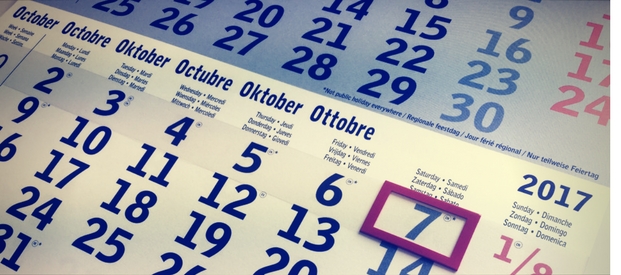Palindrome Days
This Saturday, 7 October, is a date to enjoy. It’s a palindrome date, meaning it can be read the same way forwards or backwards. When it is written with dashes to show the palindrome pattern, the date 7.10.17 becomes 71-0-17. Next month, 7 November is another palindrome date (71-1-17), and so is 7 December (71-2-17).
With three palindrome dates falling within three months, you might think this is a common occurrence, but in fact, if you count only the bigger palindrome dates where the year is shown in full (as ‘2017’ rather than ‘17’), there are just 29 palindrome dates this century.
Using the format of day, month and full year, the first palindrome date of the century was 10 February 2001 (1002-2001) and the last will fall on a leap day: 29 February 2092 (2902-2092). Our favourite recent palindrome date fell on 6 October 2016, making a neat seven-digit pattern: 610-2-016. The next one to look forward to is 2 February 2020 when the date makes the palindrome: 0202-2020.
Palindromes in other date formats
In the UK we usually show the date starting with the day, then month, then year. In the US and other countries the convention is to show first the month, then day, then year, and so the palindrome dates fall differently. This year from 10 July to 19 July, the US had a run of ten consecutive palindrome dates (71-0-17, 71-1-17, and so on up to 71-9-17). Similar runs of palindrome dates have occurred in the States every year since 2011.
Other date patterns
Patterns in dates are not uncommon. As well as palindromes there are date patterns of sequential numbers and repetitive numbers.
Sequential dates are the most unusual date patterns and only occur early in the century. The most recent sequential date in the UK fell on 11 December 2013: 11-12-13. We’ll have to wait until the next century before a similar pattern occurs on 1 February 2103: 01-02-03.
Repetitive number dates have become more common since 2001. On 12 December 2012 the date formed a repeating pattern of 12-12-12 and in the next century a similar pattern will occur on 1 January 2101 when the pattern will be 01-01-01.
This year and every year on 11 November, the day and month alone form a nice repetitive pattern of 1-1-1-1.
A palindrome date with a repetitive pattern
Back in 2002, 20 February was a very special date. Our friend Tim liked the sequence (2002-2002) so much that he chose it as the date to propose to his girlfriend. But he went one step further and included the time as well, carefully arranging the evening so he could propose at two minutes past eight, making the time and date: 2002-2002-2002.
The date was unforgettable, being both a palindrome and a repetitive number. What’s more, we’re pleased to report that Tim’s girlfriend said ‘yes’ and they are still happily married with 2 children!










